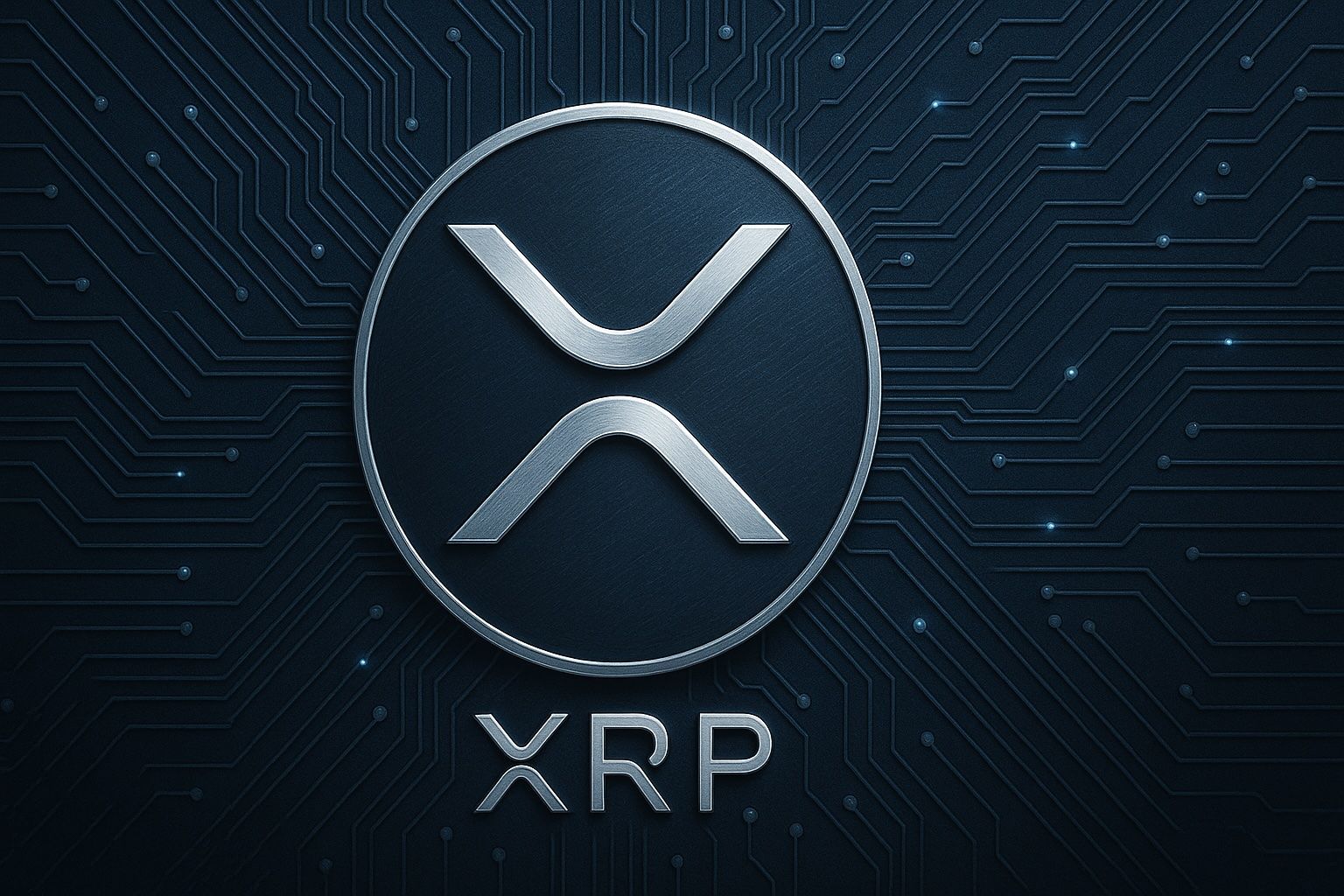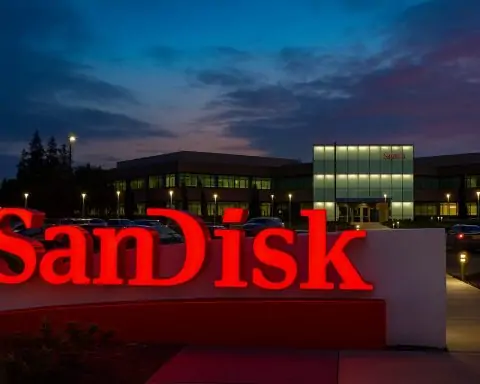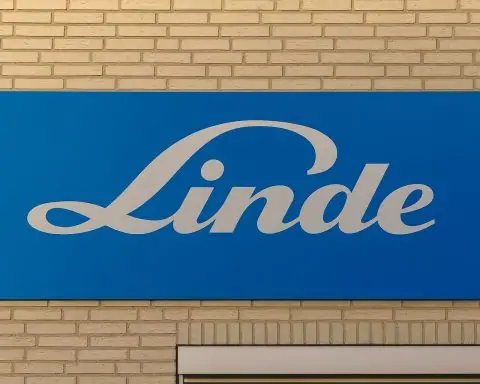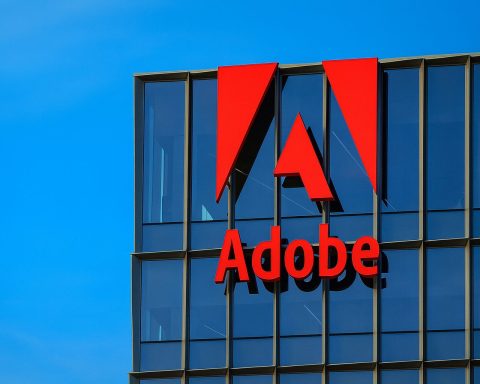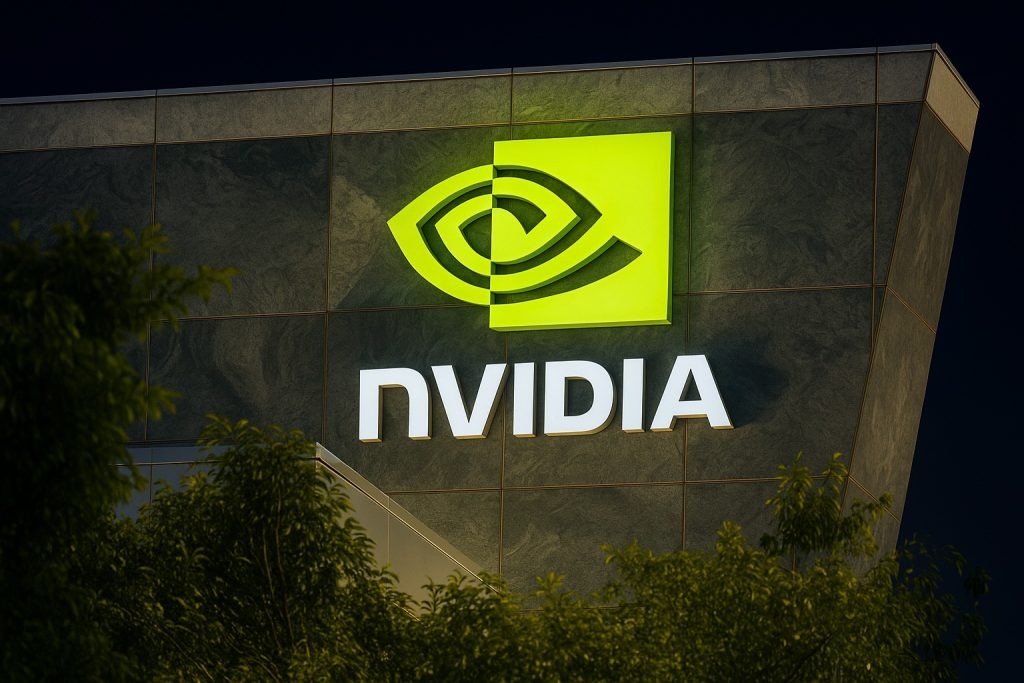Latest Updates: XRP and Ripple Labs (2024–2025)
Recent years have been eventful for XRP (the cryptocurrency) and Ripple Labs (the company behind it). Key developments include:
- SEC Lawsuit Nearing Conclusion: A landmark legal battle with the U.S. Securities and Exchange Commission (SEC) is wrapping up. In July 2023, a federal judge ruled XRP sales on public exchanges were not securities, though institutional sales violated securities laws [1]. Both Ripple and the SEC filed appeals, but by March 2025 Ripple’s CEO announced the SEC would drop its appeal, calling it a “resounding victory” for Ripple [2] [3]. A proposed settlement (including reducing Ripple’s fine from $125M to $50M) was later rejected by Judge Analisa Torres in June 2025, who insisted Ripple must still honor the court’s injunction and penalty [4] [5]. Ripple’s legal team is now weighing next steps, but the 2023 ruling stands – providing much-needed regulatory clarity for XRP.
- Major Partnerships and Market Expansion: Ripple has been aggressively expanding its network. In the Middle East, Ripple obtained a payments license in Dubai (March 2025) and signed UAE’s Zand Bank and fintech Mamo as new customers [6] [7]. In Latin America, Ripple partnered with Brazil’s largest crypto exchange, Mercado Bitcoin, to enable cross-border payments in Brazilian reais [8] [9]. RippleNet (Ripple’s payment network) now operates in 90+ countries and has processed over $70 billion in global volume, with XRP used as a bridge currency for many transactions [10] [11]. These partnerships – from banks and exchanges to remittance providers – are boosting XRP’s utility in international payments.
- Technological Advancements (XRPL Upgrades): Ripple is rolling out significant upgrades to the XRP Ledger (XRPL) to attract institutional use. By 2025, XRPL’s roadmap includes features like Ethereum Virtual Machine (EVM) sidechains for smart contracts (enabling Ethereum-compatible apps), undercollateralized lending protocols, and support for tokenizing real-world assets (e.g. bonds, gold) via new multi-purpose tokens [12] [13]. Compliance features are also being added – such as identity verification and permissioned domains for regulated DeFi – to make XRPL more bank-friendly [14]. Notably, in late 2024 Ripple launched its own U.S. dollar-backed stablecoin RLUSD on XRPL (and Ethereum), after securing NYDFS approval [15] [16]. RLUSD is fully backed by cash and treasuries and aims to bolster on-ledger liquidity for payments and DeFi [17] [18]. These tech updates position XRPL as a high-speed, low-cost platform for banks and enterprises.
- Market Performance: XRP’s market standing has strengthened amid these developments. Exchanges like Coinbase relisted XRP after the 2023 court ruling, and by mid-2025 XRP is the 4th largest crypto by market value (behind Bitcoin, Ethereum, and Tether) [19]. The token’s price surged following positive legal news – spiking ~10–12% in March 2025 when the SEC signaled an end to the case [20] [21] – and even briefly crossed $3 in early 2025, the highest level since 2018. As of mid-2025, XRP trades around the mid-$2 range [22], reflecting both broader crypto market trends and optimism that XRP will see wider adoption now that U.S. regulatory uncertainty is clearing. Analysts note that despite a $120+ billion market cap [23], XRP may still be undervalued relative to its potential role in global payments, given the scale of networks like SWIFT that it aims to disrupt.
Background: What Are XRP and Ripple Labs?
XRP is a digital asset native to the XRP Ledger (XRPL), a blockchain originally launched in 2012 by Ripple’s founders [24]. It was designed from the ground up to improve on Bitcoin’s slow, energy-intensive system by enabling fast and low-cost value transfer. XRP serves primarily as a bridge currency for cross-border transactions – a tool to move money instantly between different currencies – and as “digital cash” within the XRPL network [25] [26]. Unlike Bitcoin, XRP was not mined; the full supply of 100 billion XRP was created at inception, with a large portion escrowed by Ripple to be released on a schedule [27] [28]. This controlled release mechanism (1 billion XRP monthly, unused portions returning to escrow) provides transparency and mitigates sudden supply shocks [29] [30].
Ripple Labs, the company (originally named OpenCoin, later Ripple), is a fintech firm that developed XRP and the XRP Ledger. Ripple’s vision has been to modernize international payments. The company offers enterprise blockchain solutions – notably RippleNet – that allow banks and financial institutions to settle cross-border payments faster and cheaper than via legacy systems like SWIFT. While Ripple contributes to XRPL’s open-source development and holds a significant XRP treasury, the network itself is decentralized with over 120 validators globally [31]. It’s important to distinguish that XRP can function independently of Ripple, and many XRP Ledger validators and users are unaffiliated with the company. However, Ripple Labs’ business activities (and legal challenges) often heavily influence market perceptions of XRP.
How XRP Works Differently: The XRP Ledger uses a unique consensus protocol (sometimes termed Proof-of-Association or federated Byzantine agreement) instead of proof-of-work mining [32] [33]. A fixed set of trusted validator nodes (the “Unique Node List”) validate transactions and agree on the ledger state every 3–5 seconds [34] [35]. This design allows XRP transactions to settle in seconds, with capacity up to ~1,500 transactions per second, far outpacing Bitcoin (~7 TPS) or Ethereum (~15–30 TPS) [36] [37]. Transaction fees on XRPL are typically fractions of a cent – virtually near-zero costs – and are charged in XRP (then cryptographically burned, permanently removing those XRP from supply) [38] [39]. By foregoing mining and staking, XRPL achieves high efficiency and avoids the energy consumption of proof-of-work chains [40] [41]. These properties make XRP well-suited for payment use cases, where speed, cost, and scalability are critical. Over the past decade, XRPL has added features like a built-in decentralized exchange (order-book DEX), escrow capabilities for conditional payments, and support for issuing tokens (including stablecoins and NFTs) directly on the ledger [42] [43]. However, XRPL’s base layer does not support Turing-complete smart contracts (by design, to maximize security) [44]. For more complex decentralized finance apps, Ripple is implementing EVM-compatible sidechains to run smart contracts parallel to XRPL [45] [46]. In summary, XRP and XRPL emphasize performance and liquidity for payments – distinguishing them from general-purpose blockchains like Ethereum or store-of-value networks like Bitcoin.
RippleNet and On-Demand Liquidity (ODL)
Ripple Labs’ flagship product is RippleNet, an enterprise payment network connecting hundreds of banks, fintechs, and payment providers worldwide. RippleNet provides a standardized API for institutions to send and settle payments across borders in real time [47] [48]. It’s essentially aiming to be “SWIFT on the blockchain,” replacing slow correspondent banking processes with an internet-of-value. A key feature of RippleNet is On-Demand Liquidity (ODL), formerly called xRapid, which leverages XRP as a bridge asset to provide instant liquidity between currencies [49] [50].
How ODL Works: In a typical ODL transaction, a bank or payment provider in Country A can convert its local currency to XRP, send the XRP across the XRPL in seconds, and convert it to the target currency in Country B via a local exchange or partner – all in one flow. This means the sender does not need pre-funded nostro accounts in the destination country, as XRP provides the bridging liquidity on the fly [51] [52]. By eliminating the need to park capital in foreign bank accounts, ODL frees up working capital and significantly reduces FX costs and settlement times for cross-border payments [53] [54]. RippleNet has integrated ODL into its payment messaging system, so a financial institution can seamlessly tap XRP liquidity when needed while the end-users only see fiat in and fiat out. Notably, ODL transactions are settling in minutes (often seconds for the crypto conversion itself), compared to 2–5 day delays in traditional remittances. According to Ripple, this can cut transaction costs by ~40–60% in certain corridors, making previously expensive, slow payments (like small remittances or emerging-market transfers) much more efficient [55] [56].
Originally, Ripple offered distinct software products – xCurrent (a messaging and settlement system without XRP), xRapid (ODL using XRP), and xVia (a payments API) [57] [58]. In recent years these have been unified under the RippleNet umbrella, but the functionality remains: xCurrent-like features for messaging/settlement, and ODL (xRapid) for liquidity. Many RippleNet clients start with fiat-only settlements (just using Ripple’s network for fast messaging) and then opt into ODL to leverage XRP when they’re ready to tap deeper liquidity or need to eliminate pre-funded accounts. This flexible approach has helped RippleNet grow a large user base – 100+ financial institutions – even during the U.S. legal uncertainty. As of 2025, Ripple reports handling over 1 million transactions per day on RippleNet [59] and serving major corridors in Asia-Pacific, Africa, Latin America, and the Middle East. For example, American Express and Santander have used RippleNet to power corporate payments from the U.S. to the UK [60], Brazil’s Banco Rendimento and Mexico’s Bitso use ODL for remittances in Latin America [61], and Bank of America has been exploring Ripple’s technology for improving interbank settlement efficiency [62].
Ripple has also targeted central banks and governments: its CBDC Private Ledger (built as a fork of XRPL) allows central banks to issue and manage digital currencies. Ripple secured pilot projects with Bhutan’s central bank (for a digital Ngultrum) and Palau (for a USD-backed stablecoin), among others [63]. While those CBDC platforms don’t necessarily use XRP, they demonstrate Ripple’s growing influence in modernizing payment infrastructure. The hope (for XRP holders) is that success in these pilots will “spill over” into more trust and usage of XRP itself as a bridge currency in the global banking system [64] [65]. Ripple’s leadership often cites a potential future where a significant percentage of the world’s cross-border transactions flow through XRP-powered rails.
Regulatory Environment: The SEC Case and Global Outlook
SEC vs. Ripple: Regulatory uncertainty has long clouded XRP’s fate in the U.S., but the picture is finally clarifying. In December 2020, the SEC sued Ripple Labs alleging that XRP was sold as an unregistered security. This led to several exchanges delisting XRP and a prolonged court battle. The breakthrough came in July 2023, when Judge Analisa Torres ruled that programmatic sales of XRP to the public (via exchanges) were not securities because buyers had no expectation of profit from Ripple’s efforts [66]. However, the ruling also held that direct sales of XRP to institutional investors did violate securities laws (since Ripple executives did promote XRP’s potential to these sophisticated buyers) [67]. This split decision was hailed as a major victory for Ripple and the crypto industry, effectively affirming that XRP itself is not inherently a security – at least in secondary market trading.
The court later imposed remedies for the part Ripple lost: namely, a $125 million civil penalty and an injunction barring Ripple from future violations. Ripple and the SEC both filed appeals (the SEC wanted the judge to reconsider the ruling on retail sales, Ripple contested the injunction/fine). By March 2025, with a more crypto-friendly U.S. administration in place, the SEC agreed to drop its appeal and seek a settlement. Ripple’s CEO Brad Garlinghouse announced the news on social media, calling it the moment they’d been waiting for [68] [69]. The proposed settlement would see Ripple pay a reduced $50 million fine and essentially close the case [70] [71].
However, in June 2025 Judge Torres rebuffed this settlement plan, arguing that Ripple cannot simply sidestep the injunction she issued [72] [73]. She noted “exceptional circumstances” were not proven to justify undoing the judgment, and that courts, not the parties, have the final say on vacating an injunction [74] [75]. In short, the judge signaled she would not vacate her earlier finding that Ripple violated the law in institutional sales, nor reduce the fine, even if both sides wanted to settle on those terms. This was a surprising twist, but importantly it does not overturn the crucial part of the ruling that XRP isn’t a security in public sales. Ripple can now either proceed with a narrowed appeal (focused on the injunction) or withdraw its appeal and accept the original judgment and penalty [76]. Either way, the litigation’s end is in sight, and XRP now has legal precedent in the U.S. defining it as a non-security for retail trading [77]. This outcome has led to U.S. exchanges re-listing XRP and opens the door for institutional investors who were waiting on regulatory clarity.
Beyond the SEC case, global regulators have generally been more favorable toward XRP. Japan’s Financial Services Agency long ago stated XRP is not a security but rather a crypto asset, allowing firms like SBI Holdings to use XRP in remittances. The UK and EU have categorized XRP similarly under digital asset frameworks. In the EU, the new MiCA regulations (effective 2024) provide a clear licensing regime for crypto assets – Ripple will need a MiCA license to offer services like RLUSD stablecoin in Europe [78]. Meanwhile, countries like the UAE, Singapore, and Switzerland have welcomed crypto innovation; Ripple chose to expand in these jurisdictions (e.g. moving significant operations to Dubai and hiring compliance teams there). The shift in the U.S. regulatory climate under President Trump’s second term – including the anticipated appointment of a crypto-friendlier SEC chair [79] – bodes well for Ripple. The SEC under new leadership has already dropped or settled other crypto cases (Binance, Coinbase, Kraken) [80], suggesting a broader easing of enforcement. Congress is also debating clearer laws for digital assets. All of this contributes to a more positive regulatory environment for XRP going forward.
One notable potential development is an XRP Exchange-Traded Fund (ETF). In 2024–2025, several asset managers (Grayscale, Bitwise, Franklin Templeton, etc.) filed proposals for XRP ETFs, which would allow stock-market investors to gain exposure to XRP [81]. With the lawsuit outcome resolving XRP’s status, analysts at Bloomberg in early 2025 gave a 65–75% chance of an XRP ETF approval by year-end [82]. An ETF could significantly increase XRP’s accessibility and demand. Additionally, there’s even mention of XRP in policy discussions – for instance, the idea of a U.S. strategic crypto reserve including XRP was floated in Trump-era crypto policy chatter [83]. While speculative, it underscores how far XRP has come from being “in limbo” legally to being considered a mainstream digital asset.
XRP’s Role in Cross-Border Payments and Industry Adoption
XRP’s core value proposition lies in cross-border payments. The token was explicitly created to tackle the pain points of international money transfers: high fees, slow speeds, and the need for intermediary banks. In the traditional SWIFT system, a simple payment from (say) the U.S. to India might pass through multiple correspondent banks and take 2–3 days with hefty fees. By contrast, an XRP-mediated payment can reach in seconds with negligible cost, as described earlier. This makes XRP and RippleNet attractive to banks, remittance companies, and even corporations with global treasury operations.
Adoption by Financial Institutions: Over the past few years, Ripple steadily signed up institutions to RippleNet, often starting with the messaging software and then encouraging ODL (XRP) usage. By 2025, over 20 banks and payment providers are using ODL in production for certain corridors, and more than 100 have piloted it [84]. For example, in the U.S.–Mexico remittance corridor, MoneyGram (one of the world’s largest remitters) famously partnered with Ripple in 2019 to use XRP for a portion of its flows – dramatically cutting costs. (That partnership paused due to the SEC case, but MoneyGram has since indicated openness to resuming crypto use once clear regulations are in place.) In Asia, SBI Remit in Japan uses Ripple’s tech to power remittances to Southeast Asia, and Tranglo in Malaysia (partially owned by Ripple) facilitates ODL payments across Asia and the Middle East. Australian flash-fx, UK’s Santander, India’s Kotak Mahindra Bank – the roster of RippleNet members spans the globe. Not all use XRP yet, but the network effect is growing. Ripple’s 2025 strategy is to entice more of these participants to flip the switch for ODL as liquidity and regulatory certainty improve.
Ripple is also integrating new payment streams. In Brazil, the collaboration with Mercado Bitcoin (October 2024) enables crypto users and businesses to send international payments denominated in Brazilian Reais through Ripple’s platform [85] [86]. This effectively turns a crypto exchange into a gateway for cross-border fiat transactions using RippleNet and potentially XRP. Such tie-ups blur the lines between crypto exchanges and banks, creating a new kind of financial intermediary that can source liquidity from crypto markets. In Africa, Ripple and partners have opened corridors too – for instance, establishing channels from Nigeria to Kenya or other African trade routes using ODL to bypass illiquid currency pairs (one 2024 estimate valued a new Africa ODL corridor’s potential at nearly $1 trillion of transfer volume) [87] [88]. And as noted, the Middle East sees UAE’s Zand Bank not only adopting RippleNet but even planning an AED-backed stablecoin issuance with Ripple’s help [89] – a sign that Ripple’s reach now extends into helping banks launch their own digital currencies for domestic use.
Competing and Partnering with the Incumbents: Rather than outright replacing the SWIFT network, Ripple often positions XRP and RippleNet as complementary or upgrading the system. It has joined standards bodies (like the ISO 20022 committee for payment messaging) and ensured RippleNet is interoperable with existing banking systems. There is evidence of collaboration: e.g., SWIFT conducted a blockchain pilot (called gpi Link) and some speculated it could tap Ripple’s solutions for real-time settlement, though no formal partnership exists. Nonetheless, Ripple’s success has certainly pressured incumbents – SWIFT has responded by improving its own speeds (introducing near-instant GPI transfers in some cases) and exploring central bank digital currency connectivity. Similarly, Stellar (XLM), a nonprofit offshoot of Ripple founded by Jed McCaleb, targets cross-border payments (especially for the unbanked and NGO sector) and has partnered with IBM and others on payment projects. Stellar’s approach is more decentralized community-driven, while Ripple’s is more enterprise-driven – but both use similar tech (Stellar’s code was originally based on early Ripple protocol). In some corridors (like Latin America), we now see parallel tracks where one fintech might use XRP via Ripple, and another uses XLM via Stellar’s network, each aiming to undercut the old remittance cost structure. This growing competition validates the use of crypto as a payments utility.
Industry Trends: A broader trend aiding XRP is the increased crypto adoption by banks and payment giants. In the past year or two, mainstream financial players have warmed to crypto for settlement. Visa and Mastercard are piloting stablecoin payments (e.g., settling certain transactions in USDC on Ethereum). PayPal launched its own USD stablecoin in 2023. Banks like JP Morgan built blockchain-based networks (Onyx/LIINK, JPM Coin) for intrabank transfers. These efforts signal that the concept of blockchain for payments is becoming mainstream. Ripple’s advantage is having a ready-made global network and a proven track record with XRP in various corridors. In interviews, Ripple execs have noted that conversations with banks have shifted from “What is crypto?” to “How can we use it to solve X problem?”. The lingering constraint was always regulatory clarity – especially in the crucial U.S. market – which now is much improved for XRP. Ripple’s CEO even suggested that XRP could capture up to 14% of SWIFT’s cross-border payment volume within 5 years [90] if current adoption trajectories continue (an ambitious claim, but it speaks to Ripple’s goals). Some skeptics point out that many RippleNet clients still aren’t using XRP, opting to just use the messaging software with fiat liquidity. Ripple counters that as those clients see the cost savings of ODL (and as their confidence grows post-lawsuit), XRP usage will ramp up. The next couple of years will test that thesis.
Market Trends and XRP Price Movements
XRP’s price history has been volatile, heavily influenced by both crypto market cycles and Ripple-specific news. In late 2017, XRP infamously skyrocketed to around $3.30 during the crypto bull run, briefly making it the third-largest cryptocurrency. That was fueled by hype about bank partnerships (many announced pilots at the time) and speculation. The bear market that followed saw XRP fall over 90% and stagnate around $0.20–$0.30 for much of 2018–2020. Then came the SEC lawsuit in December 2020, which caused a sharp sell-off (XRP lost over 60% in days as exchanges preemptively delisted it in the U.S.).
Despite the lawsuit, XRP participated in the 2021 bull market to an extent, reaching about $1.80 in April 2021. But it lagged behind peers like Bitcoin and Ether in setting new highs, largely due to the legal overhang. The period of 2022–early 2023 was tough: XRP hovered in a range (~$0.30–$0.50) as crypto winter set in and Ripple vs. SEC dragged on.
July 2023 proved a turning point. When Judge Torres’ ruling came out on July 13, 2023, declaring XRP “not a security” in secondary sales, XRP’s price exploded upwards by ~70% in a single day on some exchanges. It hit about $0.80 from $0.47 prior, and volume spiked to record levels [91]. Major U.S. exchanges like Coinbase and Kraken promptly re-listed XRP, unlocking access for U.S. buyers that had been closed for ~2.5 years. XRP’s market cap surged, reinstating it firmly in the top 5 cryptos. This episode underscored how much legal clarity (or the lack thereof) impacted XRP valuation. Over late 2023, XRP traded generally in the $0.50–$0.70 range but began climbing again as optimism grew that a final resolution was coming. Broader market conditions also improved in 2024, as Bitcoin and other cryptos entered a new bullish phase (helped by anticipation of Bitcoin ETF approvals and macro factors like lower inflation). XRP, being a high-cap altcoin, benefited from this rising tide.
By early 2025, XRP rallied past $2 for the first time in over 5 years [92]. Two drivers were the March 2025 SEC case news (SEC dropping appeal), which led to a double-digit percentage price jump [93], and the overall crypto market upswing (Bitcoin crossed six figures around the same time). Some analysts also attributed the rally to speculation on an XRP ETF and increased Asian trading interest – with the legal barrier removed, more traders in markets like Korea and Japan piled into XRP. In January 2025, XRP temporarily spiked above $3.00 during a frenzied altcoin rally, approaching its all-time high. However, volatility remains; XRP pulled back to the mid-$2s by mid-2025 amid profit-taking and as the reality set in that adoption, not just legal wins, must drive the next phase of growth [94]. It’s noteworthy that XRP’s correlation with Bitcoin has at times decoupled due to these idiosyncratic news events (e.g., surging on lawsuit news even if Bitcoin is flat). But as XRP becomes more of a mainstream asset, its performance is also increasingly tied to general crypto sentiment and macroeconomic factors (like interest rates affecting risk asset demand).
Market sentiment on XRP is now cautiously optimistic. With a $100B+ fully diluted valuation, XRP’s upside may seem less explosive than small-cap tokens. Yet, believers argue that if XRP truly becomes the backbone of a new financial infrastructure, today’s price is a fraction of its potential. Importantly, XRP’s daily turnover and liquidity have grown – making it easier for institutions to consider using it. In markets like derivatives, CME Group even introduced XRP futures in 2024, providing regulated avenues for trading [95]. The availability of futures, options, and possibly ETFs means XRP’s market will likely be more liquid and “institutional-grade” going forward, which could dampen some volatility (while also inviting more speculative capital).
Future Outlook: Price and Utility Forecasts
Looking ahead, XRP’s trajectory will depend on real-world utility and continued adoption. Short-term, many expect increased usage of XRP in cross-border flows now that legal fears are allayed. Ripple is doubling down on marketing ODL to banks. If even a handful of major banks in the U.S. or EU start using XRP for liquidity (something likely only possible after clear U.S./EU regulations), it could significantly boost demand. Some industry experts predict this could happen within the next 1–2 years for specific high-friction corridors (e.g., U.S.–Mexico, Eurozone–Africa remittances). On the other hand, competition from dollar stablecoins in cross-border settlements is rising; stablecoins don’t have volatility risk, so XRP must prove its advantage in speed/cost at scale. Ripple’s launch of RLUSD stablecoin is partly a hedge here – providing an option for institutions to use a Ripple-issued USD stablecoin for settlement alongside XRP. In the short to mid term, XRP’s price will also be influenced by overall crypto market cycles (e.g., the post-2024 Bitcoin halving bull run or any macro downturn).
Many analysts have updated their price forecasts for XRP post-lawsuit. A common conservative view is that XRP could revisit its 2018 highs (~$3) and potentially reach $5–$10 in the next couple years if Ripple continues signing banks and if an ETF approval brings fresh capital. For instance, Fundstrat’s Tom Lee, a noted Wall Street strategist, stated that XRP could rise to $10 or even $35 in the near future under favorable conditions [96] [97]. He cites strong technical chart patterns and the wave of institutional adoption as rationale, along with the improved regulatory clarity [98] [99]. This bullish scenario assumes crypto markets as a whole grow and that XRP captures a meaningful slice of global payments. Another analysis imagined if Ripple manages to partner with 50+ central banks for CBDCs and if XRP were used for a substantial portion of global settlements – in such a “blue sky” scenario, XRP’s market cap could run into the trillions, theoretically translating to prices in the tens of dollars (even $20–$80+ in extreme cases) [100] [101]. However, those lofty numbers require massive adoption that is far from guaranteed. They effectively assume XRP becomes a backbone of both public and private finance globally, which is speculative.
Moderate voices point out challenges: banks are conservative and some may prefer proprietary solutions or government CBDCs over using a decentralized token like XRP. Also, while Ripple has a head start, alternative networks (Stellar, SWIFT gpi, J.P. Morgan’s Coin, etc.) will compete for the same business. In the long run, XRP’s price will likely reflect its utility – volume of payments and liquidity on XRPL – rather than hype. If Ripple achieves even a single-digit percentage of SWIFT’s ~$5 trillion daily volume in five years, the demand for XRP liquidity would be enormous, supporting much higher prices. Conversely, if adoption stagnates and XRP remains used mainly by crypto traders, its price could underperform broader crypto benchmarks.
One near-term catalyst is the possible XRP spot ETF approval, which would broaden investor access. With Bitcoin and Ethereum ETFs likely by 2024/25, XRP could follow suit given its clarified legal status. Bloomberg analysts gave high odds for an ETF approval by end of 2025 [102]. Such a product could channel significant inflows from retail and institutional investors who prefer traditional brokerage accounts over crypto exchanges. It also signals maturity – putting XRP in the same conversation as BTC and ETH in terms of investable assets.
Finally, we consider expert sentiment. Ripple’s leadership (e.g., CEO Garlinghouse) naturally remains extremely bullish, often hinting that the best is yet to come as “real utility” takes hold. Independent crypto analysts are mixed: some see XRP as one of the few coins with a clear use case and a decades-long track record, while others remain skeptical given the past controversies and the fact that a large portion of XRP is controlled (or at least escrowed) by one company. The legal victory has certainly converted some former skeptics – it’s viewed as a win for the whole industry’s fight against regulatory overreach. Prominent investors like Cathie Wood (of ARK Invest) have praised the court decision, and there are signs of more institutional interest in XRP now that compliance teams have more clarity.
In summary, the outlook for XRP is cautiously optimistic: In the short-to-mid term, gradual price appreciation toward the mid-single digits is plausible if broader crypto markets remain healthy and Ripple continues onboarding users to ODL. Long-term, XRP’s ultimate value will depend on the extent it becomes ingrained in the plumbing of global finance. With strong technology, a now-friendly regulatory climate, and Ripple’s war chest of resources (fortified by $200M+ in legal wins and big election-year lobbying [103]), XRP is better positioned than ever to make its case as the go-to cryptocurrency for cross-border payments.
Comparison: XRP vs. Stellar, Bitcoin, and SWIFT
To put XRP’s characteristics in context, the table below compares XRP and its network with Stellar (XLM), Bitcoin (BTC), and SWIFT (the traditional interbank payment network):
| Feature/Aspect | XRP (XRP Ledger) | Stellar (XLM) | Bitcoin (BTC) | SWIFT Network (Banking) |
|---|---|---|---|---|
| Launch Year & Origin | 2012 – Created by Ripple Labs for payments [104]. | 2014 – Fork of early Ripple protocol by Stellar Development Foundation (non-profit). | 2009 – Invented by Satoshi Nakamoto as first cryptocurrency. | 1970s – Global interbank messaging system (not a crypto). |
| Consensus Mechanism | Federated Consensus (trusted validators via UNL); ~3-5s ledger close [105] [106]. No mining, low energy use. | Stellar Consensus Protocol (similar federated model); ~5s settlement. No mining. | Proof-of-Work mining (decentralized but energy-intensive); ~10 min block times. | N/A (centralized messaging; settlements via correspondent banks). |
| Transaction Speed | 3-5 seconds on-chain for finality [107]. | ~5 seconds for confirmation. | ~60 minutes for final settlement (block confirmation + possible reorg safety). | Typically 1-3 days for cross-border settlement (messages are instant, but funds take days). |
| Throughput (TPS) | ~1,500 TPS on-chain (theoretical ~65,000 TPS with scaling) [108]. | ~1,000+ TPS (estimated, low usage currently). | ~7 TPS on layer1; higher via layer2 (Lightning) but base layer is low. | SWIFT can handle high message volume, but funds movement is limited by banking hours/liquidity. |
| Transaction Cost | ~$0.0001 (fraction of a cent) per txn; fees in XRP are burned [109] [110]. | Very low fees (0.00001 XLM per txn). | Variable fees (currently a few USD equivalent in BTC per txn; can spike much higher in congestion). | High fees: $20-$50 intermediary bank fees are common per transfer [111], plus FX spreads. |
| Primary Use Case | Cross-border payments, remittances, and settlements for banks/fintechs. Also tokenization of assets on XRPL. | Cross-border payments, particularly for individuals/micro-payments and NGOs. | Store of value (“digital gold”), and peer-to-peer digital cash (less used for day-to-day payments due to volatility and speed). | International payments messaging – connects 11k+ banks to coordinate fiat transfers (but not a settlement asset itself). |
| Role of Native Token | XRP is essential for liquidity – used as bridge currency in ODL to replace nostro accounts [112]. Also pays transaction fees and account reserves [113]. | XLM is used for transaction fees and optional bridge asset in Stellar’s network (often not required if anchors provide fiat liquidity). | BTC is the asset being transferred/stored – it’s the value itself, with no built-in use for bridging other currencies. | No native token – uses existing fiat currencies. Messages instruct debits/credits between bank accounts. |
| Governance & Control | Open-source ledger with 120+ validators. Ripple Labs heavily contributes but doesn’t unilaterally control network (though it held much of supply) [114] [115]. | Open-source network. Stellar Foundation oversees development; more decentralized in supply distribution than XRP (initially gave away large amounts of XLM). | Fully decentralized governance through mining consensus – no centralized authority (development led by Bitcoin community). | SWIFT is a member-owned co-op of banks; governed by banks with centralized protocols and oversight. |
| Notable Strengths | Speed & cost: near-instant settlement and negligible fees. Financial integration: built-in DEX, escrow, compliance features [116] [117]. Regulatory clarity (2025): Not a security in U.S. [118]. Strong enterprise adoption (banks, payment providers). | Fast and low-cost like XRP. Strong focus on financial inclusion (e.g., facilitating NGO payments, developing world use). Backed by a non-profit; former Ripple co-founder at helm. | Most secure (vast mining power), most recognized crypto. Decentralized and censorship-resistant. Seen as digital gold/store of value (institutional recognition). | Ubiquity: nearly every bank worldwide connected. Trillions in daily volume. Robust compliance and messaging standards (ISO 15022/20022). Widely trusted among banks (but see weaknesses). |
| Notable Weaknesses | Centralization concerns: Criticized for past Ripple control over supply and validators (though improving). Perception: Long court battle hurt image. Still competing with stablecoins. | Network effect: smaller network than RippleNet, fewer major bank partners. Overlap with XRP: Seen as direct competitor to XRP in similar use case, but with far less publicity lately. | Scalability: Low TPS on base layer, high fees in usage spikes. Not practical for day-to-day small payments. Volatility: Price swings limit use in commerce. Slow development (by design). | Slow/expensive: Actual settlement relies on old banking hours and intermediaries. Opaque: Users often don’t know fees up front; funds can get held. Innovation lag: Relatively inflexible, now facing competition from fintech and crypto solutions. |
Table: Comparing XRP and the XRP Ledger with Stellar, Bitcoin, and SWIFT. XRP and Stellar share a focus on payments and speed, but differ in philosophy (for-profit vs non-profit stewardship). Bitcoin contrasts as a decentralized store of value with much slower throughput. SWIFT, while not a cryptocurrency, is the legacy system Ripple aims to improve upon – highlighting why XRP’s near-instant, low-cost transfers are so disruptive in the context of slow traditional banking networks.
Conclusion
XRP and Ripple Labs have navigated a tumultuous journey but emerged in 2025 with renewed momentum. The resolution of the SEC lawsuit – largely in Ripple’s favor – marks a new era of regulatory clarity that is already rekindling institutional interest in XRP. Ripple’s relentless focus on real utility, through RippleNet and ODL, has started to bear fruit in the form of major partnerships and live payment corridors spanning the globe. Technologically, the XRP Ledger continues to evolve (with integrations like stablecoins, sidechains, and tokenized assets) to meet the needs of banks and businesses. Challenges remain, from competition with other cryptos and incumbent networks to the need for broader user trust and liquidity. However, the narrative around XRP is shifting from one of legal woes to one of opportunity in transforming cross-border finance.
Armed with a decade of experience, a war chest of funds, and an expanding ecosystem, Ripple and the XRP community are setting ambitious targets – aiming to capture a meaningful share of the $155 trillion global payment market. If they succeed even in part, XRP’s utility and value could increase dramatically in the coming years. In the meantime, XRP stands as a unique case study in the crypto world: a fast, efficient digital asset purpose-built for an age-old problem, now finally getting its chance to shine on the mainstream stage. The next few years will reveal whether XRP truly fulfills its role as the “digital bridge currency” connecting the world’s money, or whether evolution in finance takes a different path. For now, XRP enters this new chapter with significant tailwinds – legal victory, technological upgrades, and growing adoption – positioning it as one of the most intriguing cryptocurrencies to watch in the global payments arena.
Sources: Recent news and data have been drawn from Reuters [119] [120], CoinDesk [121] [122], 21Shares Research [123] [124], and other reputable industry sources as cited throughout this report.
References
1. www.reuters.com, 2. www.coindesk.com, 3. www.coindesk.com, 4. www.reuters.com, 5. www.reuters.com, 6. www.coindesk.com, 7. www.coindesk.com, 8. www.coindesk.com, 9. www.coindesk.com, 10. www.coindesk.com, 11. www.coindesk.com, 12. www.21shares.com, 13. www.21shares.com, 14. www.21shares.com, 15. www.coindesk.com, 16. www.coindesk.com, 17. www.coindesk.com, 18. www.coindesk.com, 19. www.reuters.com, 20. www.coindesk.com, 21. www.binance.com, 22. thecryptobasic.com, 23. thecryptobasic.com, 24. www.21shares.com, 25. www.21shares.com, 26. www.21shares.com, 27. www.21shares.com, 28. www.21shares.com, 29. www.21shares.com, 30. www.21shares.com, 31. archax.com, 32. www.21shares.com, 33. www.21shares.com, 34. www.21shares.com, 35. www.21shares.com, 36. www.21shares.com, 37. www.21shares.com, 38. www.21shares.com, 39. www.21shares.com, 40. www.21shares.com, 41. www.21shares.com, 42. www.21shares.com, 43. www.21shares.com, 44. www.21shares.com, 45. www.21shares.com, 46. www.21shares.com, 47. www.21shares.com, 48. www.21shares.com, 49. www.21shares.com, 50. www.21shares.com, 51. www.21shares.com, 52. www.21shares.com, 53. www.21shares.com, 54. www.21shares.com, 55. www.21shares.com, 56. www.21shares.com, 57. www.21shares.com, 58. www.21shares.com, 59. www.21shares.com, 60. www.21shares.com, 61. www.21shares.com, 62. www.21shares.com, 63. www.21shares.com, 64. thecryptobasic.com, 65. thecryptobasic.com, 66. www.reuters.com, 67. www.reuters.com, 68. www.coindesk.com, 69. www.coindesk.com, 70. www.reuters.com, 71. www.reuters.com, 72. www.reuters.com, 73. www.reuters.com, 74. www.reuters.com, 75. www.reuters.com, 76. www.reuters.com, 77. www.reuters.com, 78. www.coindesk.com, 79. www.coindesk.com, 80. www.reuters.com, 81. www.coindesk.com, 82. www.coindesk.com, 83. www.coindesk.com, 84. www.ainvest.com, 85. www.coindesk.com, 86. www.coindesk.com, 87. www.krayondigital.com, 88. u.today, 89. www.coindesk.com, 90. www.pymnts.com, 91. www.poundsterlinglive.com, 92. thecryptobasic.com, 93. www.binance.com, 94. www.coindesk.com, 95. www.cmegroup.com, 96. www.binance.com, 97. www.binance.com, 98. www.binance.com, 99. www.binance.com, 100. thecryptobasic.com, 101. thecryptobasic.com, 102. www.coindesk.com, 103. www.coindesk.com, 104. www.21shares.com, 105. www.21shares.com, 106. www.21shares.com, 107. www.21shares.com, 108. www.21shares.com, 109. www.21shares.com, 110. www.21shares.com, 111. www.21shares.com, 112. www.21shares.com, 113. www.21shares.com, 114. www.21shares.com, 115. www.21shares.com, 116. www.21shares.com, 117. www.21shares.com, 118. www.reuters.com, 119. www.reuters.com, 120. www.reuters.com, 121. www.coindesk.com, 122. www.coindesk.com, 123. www.21shares.com, 124. www.21shares.com
